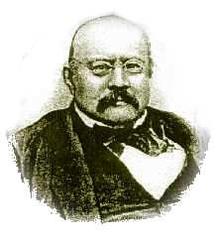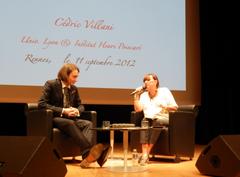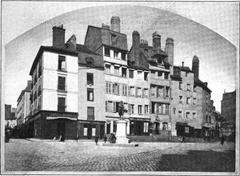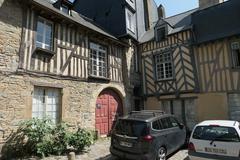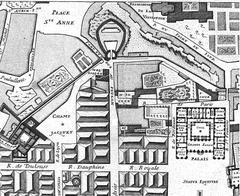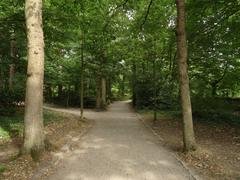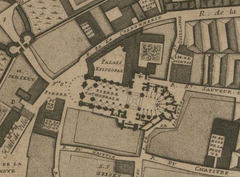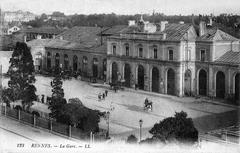
Adolphe Orain Visiting Hours, Tickets, and Rennes Historical Sites Guide
Date: 04/07/2025
Introduction to Adolphe Orain and Rennes’ Historical Significance
Rennes, the dynamic capital of Brittany, France, is renowned for its deep cultural roots and vibrant history. One of the most influential figures shaping its identity is Adolphe Pierre Julien Orain—a historian, folklorist, and advocate for Breton heritage. Born in 1834 in Bain-de-Bretagne, Orain devoted his life to documenting the folklore, language, and stories of Brittany, ensuring their preservation amid 19th-century modernization (Wikipedia, broceliande.brecilien.org).
Today, visitors to Rennes can connect with Orain’s legacy by strolling along the Allée Adolphe Orain, perusing his writings in local libraries, or exploring the medieval core of the city, where landmarks like Cathédrale Saint-Pierre and the Parlement de Bretagne provide a vivid backdrop to the stories Orain helped safeguard (France Travel Blog, thetouristchecklist.com). This guide will provide practical travel tips, visiting hours, accessibility details, and suggestions for cultural experiences that celebrate both Orain’s legacy and the enduring traditions of Brittany (baindebretagne.fr, gralon.net).
Table of Contents
- Introduction
- Early Life and Background
- Professional Career and Public Service
- Literary and Scholarly Contributions
- Experiencing Adolphe Orain’s Legacy in Rennes
- Personal Life and Character
- Recognition and Legacy
- Exploring Allée Adolphe Orain
- Visiting Rennes Historical Sites through Orain’s Guide
- Exploring Allée Adolphe Orain: Visitor Guide
- Summary and References
Early Life and Background
Adolphe Pierre Julien Orain was born April 19, 1834, in Bain-de-Bretagne. His upbringing in rural Brittany, as the son of a tanner, immersed him in regional traditions and stories. This environment sparked his life-long fascination with local history and folklore (Wikipedia).
Professional Career and Public Service
Orain joined the Préfecture of Ille-et-Vilaine in 1854, advancing to head of the finance division in 1877 (broceliande.brecilien.org). His commitment to public service extended to his role as mayor of Bain-de-Bretagne from 1900 to 1902, where he promoted civic engagement and heritage awareness (baindebretagne.fr).
Literary and Scholarly Contributions
Folklore and Ethnography
Orain, alongside Paul Sébillot, is recognized as a leading Breton folklorist. He meticulously recorded legends, customs, and oral traditions, publishing works like “Au Pays de Rennes” (1892), which remain invaluable resources for understanding Brittany’s rural culture (Wikipedia, broceliande.brecilien.org).
Historical Research
His historical studies focused on Rennes and its surroundings, deepening our understanding of figures like Jean Leperdit and events such as the Chouannerie. Orain combined archival research with oral testimony for a comprehensive perspective.
Promotion of the Gallo Language
Orain was a dedicated advocate for the Gallo language, actively working to preserve it during an era of increasing French linguistic dominance (baindebretagne.fr). His efforts contributed to the ongoing revival of regional languages.
Experiencing Adolphe Orain’s Legacy in Rennes
Libraries and Archives
The Rennes Métropole Library and local archives house Orain’s publications, accessible Tuesday–Saturday, 10 AM–6 PM. Admission is typically free; check for special events or exhibits.
Cultural Walking Tours
Guided city tours often reference Orain’s research, highlighting the monuments and neighborhoods he described. These can be booked through Rennes Tourism.
Breton and Gallo Cultural Events
Events like the Festival de la Saint-Loup celebrate regional languages and traditions, sometimes featuring presentations on Orain and Breton folklore.
Allée Adolphe Orain
This street in Bain-de-Bretagne commemorates Orain’s legacy. A short trip from Rennes, it provides a direct connection to his roots.
Accessibility and Travel Tips
Most heritage sites in Rennes are accessible, but confirm details before visiting. Public transport makes it easy to reach both city sites and neighboring communes.
Personal Life and Character
Orain married Marie-Anne Julien in 1863 and endured personal loss with the deaths of two sons. He was noted for his intellectual curiosity and diverse interests, reflected in his “petit musée de curiosités” at home (broceliande.brecilien.org).
Recognition and Legacy
Honored with the Palmes académiques and the Légion d’honneur in 1886, Orain’s influence endures through street names, commemorative events, and accessible writings (baindebretagne.fr).
Exploring Allée Adolphe Orain
Historical Background
Allée Adolphe Orain, in Rennes, honors Orain’s legacy as a folklorist and cultural preserver. His works, including “Contes de l’Ille-et-Vilaine,” highlight the traditions and values of Brittany (Google Books, Gralon).
Visiting Information
- Location: Central Rennes, accessible by public transport and close to the main railway station.
- Hours & Fees: Open 24/7; no tickets required.
- Best Time: Spring and autumn offer ideal weather. A visit typically lasts 20–30 minutes.
- Nearby Amenities: Cafés, shops, and green spaces are close by.
Cultural Sites Nearby
- Parc du Thabor: A landscaped park with botanical gardens (France Travel Blog).
- Old Town: Medieval streets with timber-framed houses (France Travel Blog).
- Musée de Bretagne: Exhibits on Breton history and culture (France Travel Blog).
- Marché des Lices: A vibrant Saturday market.
Visitor Tips
- Language: French is primary, with Breton and English also used.
- Transport: Rennes offers excellent public transport and bike-sharing (France Travel Blog).
- Safety: Rennes is safe; use standard precautions.
- Etiquette: Greet shopkeepers with “Bonjour” and respect the residential character of the area.
Visiting Rennes Historical Sites through Orain’s Guide
Key Sites to Visit
- Medieval Streets: Rue Saint-Georges, Rue Saint-Michel, and others with historic half-timbered houses.
- Cathédrale Saint-Pierre: Open daily, free entry, wheelchair accessible.
- Parlement de Bretagne: Guided tours available, tickets required.
- Parc du Thabor: Open from 7 AM until dusk, free.
Visitor Information
| Site | Hours | Tickets | Accessibility |
|---|---|---|---|
| Cathédrale Saint-Pierre | 9:00 AM – 6:30 PM (daily) | Free | Wheelchair accessible |
| Parlement de Bretagne | 10:00 AM – 6:00 PM (Mon–Sat) | €6 adults; concessions | Partial accessibility |
| Parc du Thabor | 7:00 AM – dusk (year-round) | Free | Accessible pathways |
- Guided Tours: Book through thetouristchecklist.com or Rennes Tourism.
- Getting Around: The center is walkable; public transport is reliable.
- Accessibility: Historic areas may be uneven; wear comfortable shoes.
Exploring Allée Adolphe Orain: Visitor Guide
What is Allée Adolphe Orain?
A tranquil, T-shaped street named for Adolphe Orain, reflecting Rennes’ commitment to honoring local heritage.
Getting There & Accessibility
- Buses: Lines 31, 44, 51, 9, C3, C4, and C6. Closest stop: George Sand (Moovit).
- Metro: Gares station, four minutes away.
- Train: Gare de Rennes, 19 minutes’ walk.
- Cycling: Use the LE vélo STAR bike-sharing system.
- Accessibility: Flat and paved; suitable for all visitors.
Nearby Attractions
- Parc du Thabor
- Les Champs Libres
- Centre-Historique
- Marché des Lices (Best Things to Do in Rennes)
Safety and Etiquette
Be mindful of residents, keep noise to a minimum, and use sidewalks carefully.
Sustainability
Opt for public transport or cycling, dispose of litter responsibly, and respect the neighborhood’s character.
Summary of Visiting Adolphe Orain and Key Visitor Information
Adolphe Orain’s work continues to enrich Rennes’ cultural landscape, inviting visitors to experience the city’s history through the lens of its traditions. From walking the peaceful Allée Adolphe Orain to exploring iconic sites and engaging in local festivals, travelers gain unique insights into Brittany’s evolving identity (broceliande.brecilien.org, francetravelblog.com).
For a seamless visit, use public transport, explore on foot or by bike, and take advantage of local guides and tourism resources. Download the Audiala app for curated itineraries, and follow Rennes tourism channels for updates on cultural events (rennes-tourisme.com, baindebretagne.fr).
References and Further Reading
- broceliande.brecilien.org
- Wikipedia – Adolphe Orain
- Gralon – Allée Adolphe Orain
- thetouristchecklist.com
- Moovit – Allée Adolphe Orain
- Rennes Tourism
- baindebretagne.fr
- France Travel Blog
- Best Things to Do in Rennes






